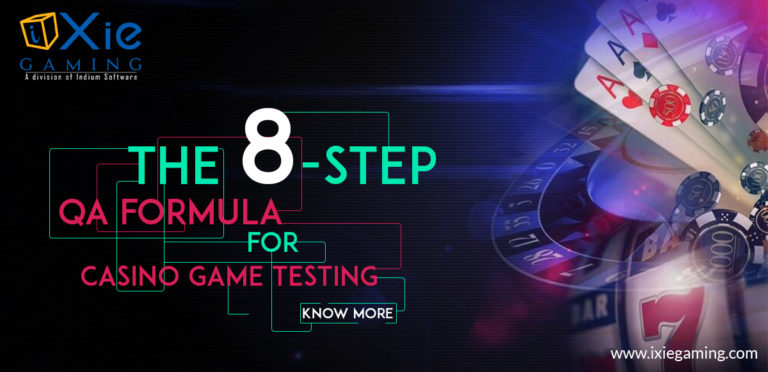Game analytics has a real-life impact on game players. Learn the basics of game analytics through this article by seeing how to make your games more popular by implementing these insights.
If you are a game developer starting your journey into the world of games, then it’s essential to understand how to make your games more popular. By using some form of analytics in your games, you can see what features of your game are used most and many more factors that make your game-users happy, which will help you come up with new ideas for the future.
What is Game Analytics?
Game analytics is a term that refers to the process of gathering and analyzing data about games, players, and other aspects of their experience. This is done by using tools like Google Analytics, which can help you understand how people play your game, what they’re doing in it, how often they play it, and what kinds of things drive them to do so.
Game Analytics helps you analyze and understand your game’s performance, so you can improve it and make more people play it. It is a technology that lets developers discover how many users are playing their games in real-time. Your analytics dashboard will show you which apps are being used, where they’re coming from, how long they spend, and much more information about the games being played.
Why Game Analytics is so important
Game analytics is so crucial because it allows you to keep track of your game’s performance, which can help you make more informed decisions about how to improve. Here are some reasons why we think game analytics is so important:
- It helps you better understand your audience, their preferences and behaviors, and their needs.
- It allows you to compare different versions of the same game to see how they perform over time and across platforms. You can use this data to decide which version of your game is doing well and which parts need improvement.
- It is also a way for you to find out about the market and what kinds of games are popular at the moment.
- Analytics can help you determine what kind of game content will appeal to your audience, as well as how much time people spend playing your games.
- It can also help you with marketing strategies by providing information about where people are coming from, which websites they’re visiting, and what kind of information would be most appealing to them at that time.
- Analytics will also show you how much traffic comes through your site or app during certain times of the day or week.
- The last reason why game analytics is so important is that it provides insight into how much money you are making through sales or advertising revenues each month; this helps determine whether or not the business model is working well enough for everyone involved within the company’s financials (i.e., employees).
It might be interesting to read our elaborated Case study on Gaming Analytics for a Metaverse Company
How to start using Game Analytics
Having a game analytics solution is like having a tool that can measure everything from your click-through rate to your retention rates to the number of times players have interacted with your product. It can help you learn more about what people are doing when they play your game and give you information about how to improve it to make it more engaging and fun for everyone.
The first step in getting started with an analytics system is to set up an account on the platform that you want to use. This can be done through a simple registration process, or if you already have an account with a different analytics platform, you may be able to move over that data using features like import/export tools.
Once your account is set up, several steps are involved in creating reports within the system. First, choose metrics to track: clicks, revenue per user, and time played per user. You’ll probably want to do this by category for example, “Clicks” will include purchases and other interactions like seeing advertisements or participating in polls/surveys.
After you’ve chosen the metrics you want to track, you’ll need to create a report for each category. This will include data on the number of clicks, revenue generated, and other relevant information.
Once your reports are set up, it’s time to analyze your data! You can look at trends over time to see what’s driving user engagement or at specific segments of your users to see which ones are most engaged with your game.

How to Increase your User Base with Game Analytics
With the ways explained below, you’ll be able to increase your user base with game analytics.
Player retention and conversion rate
If you’re interested in what people do after they’ve played your game, you should look at how long they play, how long they play each day, and what kind of actions they take during that time. This can help you understand whether players are engaging with your game enough to keep coming back for more.
User acquisition and retention
If you want to grow your user base, the best way to do that is usually by expanding who is playing your game. You can accomplish this by investing in marketing campaigns that target specific groups of people based on their demographics and interests.
Engagement metrics
Another way to increase your user base with game analytics is by measuring player engagement so that you know whether or not your players are having fun with the game!
How to retain users and make them loyal
There are three main ways game developers can retain users and make them loyal with game analytics.
Behavioral analysis
The first is to keep track of user behavior. For example, if a user is playing the game for an extended time (say, at least five hours), that’s a good sign that they’re having fun. If they’re not playing for more than an hour or two, it might be time to see what else the user might enjoy doing in the game and then offer them a new feature for free!
Offering task rewards
Another way to retain users is by offering them incentives to come back every so often. This could be anything from extra rewards after completing specific tasks within the game to special bonuses if they play on a particular day of the week.
Offering personal incentives
Developers should offer incentives that are unique and specific to each player. For example, one player might get more points for winning a fight; another might earn extra points for watching YouTube videos about their favorite games. By offering these kinds of rewards in small doses throughout the day or week, you can ensure that even though players may lose interest in your game at times when they do return they are more likely to be loyal and stick around longer.
Conclusion
You’ve come to the right place if you’re new to game analytics. While it’s a growing field, it is still relatively untapped, and there are plenty of opportunities for enterprising designers to bring their games to the next level. Review some helpful resources on the topic, consider implementing some of these concepts into your current games, and be open to new ideas as they arise in this rapidly changing field.






